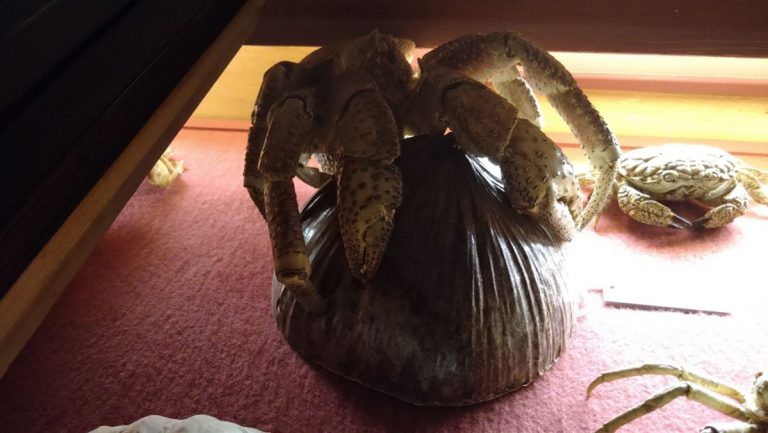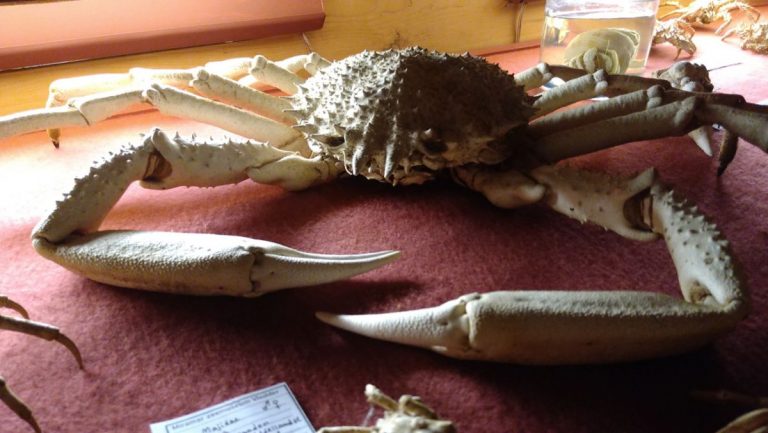The ‘wunderkammer’ has a display case filled with crabs. If you think the crabs in the cabinet look a bit empty, you might be right. Crabs are crustaceans. This means that when a crab dies, only their shell remains. This hard shell is also known as the exoskeleton.

If you look carefully at the exoskeleton of a crab, you may notice that a crab does not have a tail, like a lobster. This is because a crab’s tail is curled up under its belly. If you were to turn a skeleton upside down, you would be able to see the tail.
In addition, if you look closely, all crabs have five pairs of legs. The front pair are the distinctive claws, which can sometimes grow into large snapping pincers. These legs are used by the crab to eat or defend itself.

One of our most unusual crabs is the giant Japanese spider crab. It can reach a length of 3.5 metres. Our spider crab is a bit smaller, but still very impressive.
Also on display is a crab that is actually not a crab at all, but a lobster, called the coconut crab. What makes this lobster so unique is that it lives on land. It can also climb trees and dig burrows in the ground. An extraordinary ‘sea creature’, don’t you think?
Would you like to learn more about crabs or other marine animals, such as the starfish? Then plan your visit to Miramar Zeemuseum shortly.
Miramar Zeemuseum opens again in April 2025.
Monday:
Tuesday:
Wednesday:
Thursday:
Friday:
Saturday:
Sunday:
closed
13:00-17:00
13:00-17:00
13:00-17:00
13:00-17:00
closed
13:00-17:00
ADDRESS & CONTACT
Vledderweg 25
8381 AB, Vledder
T: +31(0)521-381300
+316 81074336
E: info@miramar-zeemuseum.nl